The Medmont M700 is a high-precision automated perimeter designed for comprehensive visual field assessment. With its fast testing technology, extended field capacity up to 80°, and sophisticated analysis tools, it offers a reliable solution for screening and monitoring visual conditions such as glaucoma, macular and neurological disorders. Its intuitive interface, optimised patient comfort and integration with practice management systems make the M700 an ideal choice for eye care professionals seeking performance and durability.
M700 Visual Field Perimeter - Perfect Condition
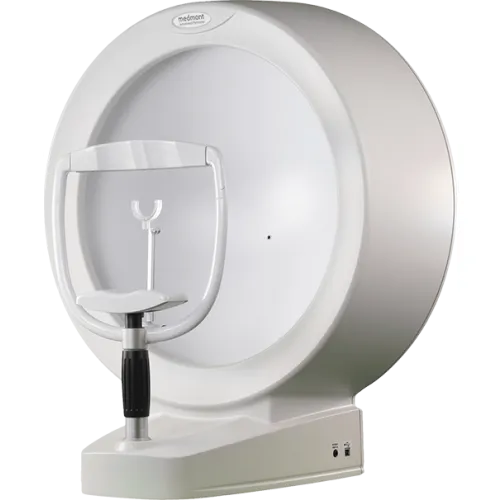
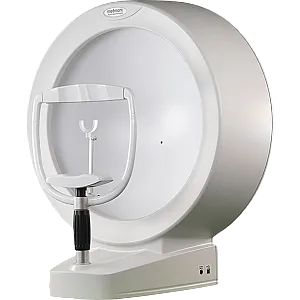
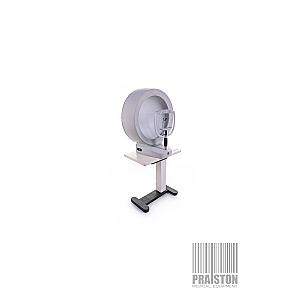
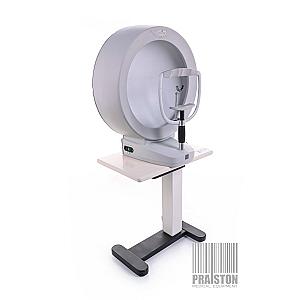
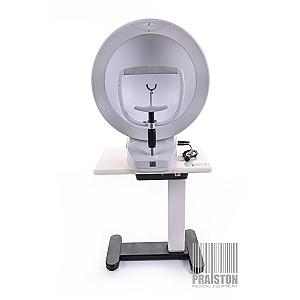
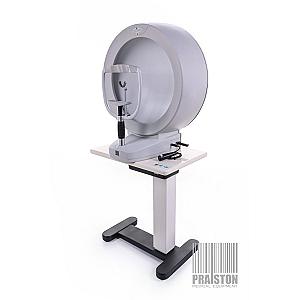





Offer Details
Accessories :
MEDMONT polometer user manual in English (PDF), Power cord, Wired keyboard and mouse, Monitor, Computer station, Stationary table of the monitoring station, Mobile electric polometer table, Wired patient button, HP printer,
Seller Warranty :
6-months for domestic market (Poland), 3-months for the international market,
Description
Medmont M700 – Excellence in automated perimetry
The Medmont M700 is a state-of-the-art visual diagnostic instrument designed to provide accurate and rapid visual field assessment. With over 30 years of innovation in perimetry, the M700 combines reliability, efficiency and ergonomics to meet the needs of ophthalmology and optometry practitioners.
This automated perimeter stands out for its ability to cover a wide visual field of up to 80°, allowing the exploration of peripheral defects often overlooked by centred tests. With an increased density of concentric test points towards the fovea, the M700 ensures fine detection of sensitivity loss, particularly in the macular and arcuate regions.
One of the major advantages of the M700 is its rapid testing strategy. Using predictive algorithms, it is capable of performing a central field test in just three minutes per eye, while maintaining optimal accuracy. This speed significantly improves patient comfort and practice productivity.
The M700 offers a comprehensive range of specialised tests, including an international standard binocular driving test, a diplopia test for double vision analysis, and a flicker test for early detection of visual field loss. These tests are accompanied by in-depth analysis including overall defect indices, pattern defect indices and cluster analysis, which are particularly useful in glaucoma monitoring.
The M700's user interface is designed to be intuitive, even for users with no computer experience. Running on Microsoft Windows™, it allows for smooth navigation between results, test settings and patient data. In addition, integration with Medmont Studio facilitates medical record management, synchronisation with other Medmont equipment and access to data on a shared network.
Patient comfort is also at the heart of the M700's design. Its open, ergonomic structure eliminates the claustrophobic feeling often associated with tank perimeters, promoting more reliable results.
The M700 is built to last. Its electronic stimulation unit with no moving parts reduces maintenance requirements, and its compatibility with current IT standards ensures long-term integration into any clinical environment.
Features
- Quick test strategy with Bayesian algorithms
- Flicker test for early detection
- Diplopia test with gaze tracking
- 160° binocular driving test
- Advanced analysis: regression, histograms, HoV profiles
- 3D display of the visual field
- Intuitive interface under Windows™
- Integration with Medmont Studio and external databases
- Video monitoring of fixation (optional)
- No regular maintenance required
Technical Details
- Stimulation screen: Partial hemispheric bowl, 30 cm radius, integrated diffusing surface
- Test fields:
- Central 30°: 100 points
- Full field 50°: 164 points
- Peripheral 30°–50°: 73 points
- Macula 10°: 49 points
- Glaucoma 22°/50°: 104 points
- Neurological 50°: 164 points
- Driving 50°/80°: 106 points
- Binocular 30°/40°: 21 to 128 points
- Binocular driving test 160°: 124 points
- Spatial adaptation test 50°: 40 points
- Stimulus source: Rear projection light-emitting diode
- Stimulus colour: Pale green (565 nm, bandwidth 28 nm)
- Stimulus size: Goldmann size III (0.43°)
- Stimulus intensity: 0.03 to 1000 asb in 15 x 3 dB steps / 45 x 1 dB steps
- Stimulus duration: Adjustable from 0.1 to 9.9 sec (nominal 0.2 sec)
- Patient response time: Adaptive, adjustable from 0.1 to 9.9 sec (nominal 1.1 sec)
- Minimum inter-stimulus delay: Adjustable from 0.1 to 9.9 sec (nominal 0.4 sec)
- Background lighting: 10 asb (3.2 cd/m²), automatic level control
- Test lens diameter: 38 mm
- Fixation method: Heijl-Krakau blind spot method, automatic tracking with visual and audible alerts
- Stimulation unit dimensions: 626 mm (W) x 438 mm (D) x 713 mm (H)
- Stimulation unit weight: Approximately 16 kg
- Power supply: 110/220/240 VAC, 50/60 Hz, 30 W
Compatible Accessories
- Asymmetrical table bon T70 for an instrument
- VELA Medical "Move+" patient chair with electric height adjustment
- Video monitoring camera
- Sound card for audible alerts
- Medmont Studio software for practice management
- Compatible inkjet or laser printer